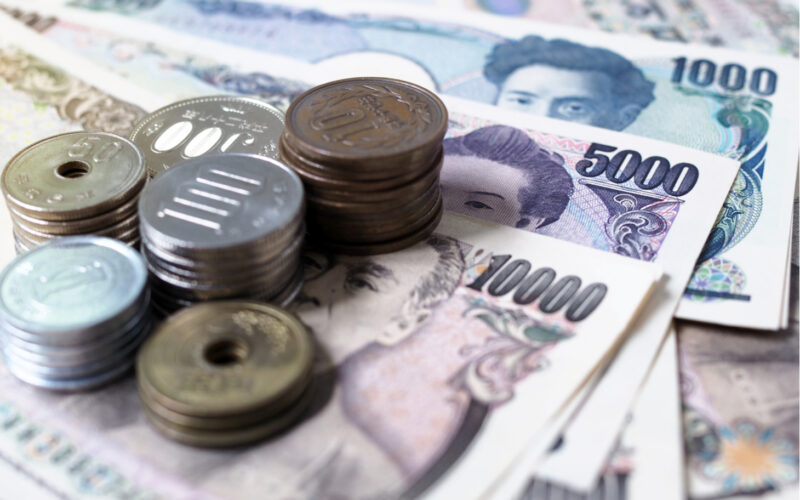You’ll need your thinking caps on for this one, my friends. But if someone had explained sub-prime mortgages to you in 2006, that would’ve been true too. But worth it.
The good news is that there’s sufficient political incorrectness strewn throughout my claim that Japan is about to launch a monetary Pearl Harbor to keep you interested, however confusing thing might get.
Before we dig into the value of the yen, Japanese monetary policy, yield-curve control, and why all this should matter to you, let’s start with something a little personal…
Back in Christmas 2018, my family got snowed in. My German mother and her Scottish partner had invited my Japanese in-laws to her home in the Austrian Alps.
Now you might be thinking “with that mix, what could possibly go wrong?”. And everything was going surprisingly well. Until disaster struck.
It happened after a particularly bad bout of Uno losses.
“Why did you attack Pearl Harbor?” my German mum asked her Japanese guests out of the blue.
The room went cold. I outright froze. Even my mum’s partner went quiet for once.
I can’t really tell you what anyone else’s reaction was because I was staring intently at the table decorations. Pine cones and candles combined into a Christmassy garland running the length of the table. Very tasteful.
At some point, my Japanese father-in-law cleared his throat and said, “Because America cut off Japan’s oil supply.”
I don’t really recall what happened next. Perhaps I explained something about the oil embargo the Americans had imposed on Japan. Perhaps we turned back to the Uno game. Either way, things only got less bad from there on in. And nobody made any comment about what the Germans had been up to at the time. Thank God.
A few months later, my mum complained that her guests had never called her or got in touch since their visit. She felt this was “strange”. I can’t say I’m surprised though.
What does this have to do with the Japanese plan to blow up the global financial system? Well, actually, there isn’t one. What we do have is kind of the opposite.
Japan’s misguided plan is actually holding the financial world together at the moment. But it might be about to fail.
Here’s the background story.
Ever since 2016, the Japanese central bank, the Bank of Japan, has been using its limitless budget to cap Japanese bond yields near zero. This means that they are willing to buy as many government bonds as it takes to keep the government’s interest bill at zero. And they have been buying a lot to do this.
However, the side effects of this are what we’re really interested in. When Japanese investors, who hold a lot of money, decide what to invest in… well, a 0% return on Japanese government bonds isn’t very exciting. And so Japanese money has been flooding out of Japan and into all sorts of investments around the world.
Similarly, investors who are able to borrow yen at ridiculously low interest rates and then invest the money overseas have been doing so, with the Bank of Japan’s cap on interest rates practically financing them. This is known as the yen carry-trade.
If you put the effects together, you get the idea that the Bank of Japan has been printing money which then floods into the world’s financial markets. This helps fund broke European governments, keeps American mortgage rates low and pushes up the stock market.
Now, usually, this sort of policy would cause the value of the currency to nosedive. Printing money devalues it. But Japan’s yen is different, for a long list of reasons, such as Japan’s vast exports. Or, rather, it was different until recently.
While the Russian rouble was the best-performing currency in March, the yen plunged. It has been the worst-performing currency so far this year amongst developed-market peers, in addition to being the worst-performing currency of the G10 in 2021.
The drop occurred because other central banks around the world are busy tightening monetary policy in response to inflation. The higher interest rates make investment in those currencies more attractive.
However, in Japan, inflation hasn’t taken off in quite the same way. And the Japanese government can’t really support an interest bill much above zero because it has so much debt.
Back to the yen again in a moment.
The risk is that Japan’s back-door bailout of the world is beginning to look a little fragile. And it might reverse.
Now you may not care much about Japan. But, as I explained, Japanese investors have been busy buying up vast amounts of financial assets across the globe, or financing those purchases via the “carry trade”. Either way, this purchasing behaviour has been indirectly funded by the Bank of Japan’s money printing in support of its yield cap.
If this situation reverses, one of the most important crutches holding up financial markets could be pulled out. Freshly created money would stop flowing from the Bank of Japan into the Japanese bond market, pushing a flood of money into other markets.
But why would all of this reverse?
For several reasons.
The first is inflation. If this finally hits Japan, making the Bank of Japan question its commitment to capping government bond yields, the whole flow of money could reverse.
Inflation hasn’t struck yet, at least not in terms of consumer prices. However, the Producer Price Index rose more than 9% year over year. That’s how things kicked off with our own inflation, if you remember.
Japanese companies are either going to see their profits evaporate, or they’ll have to raise prices, resulting in inflation.
Alternatively, the Bank of Japan could lose control of the yield curve. An infinite budget might not be sufficient to control bond markets after all.
This is quite similar to when George Soros broke the Bank of England. A currency peg isn’t dramatically different from an interest-rate peg. And pegs have a habit of breaking.
That’s not the only historical rhyme to today. When embarrassed analysts and policymakers reviewed what happened in the lead-up to 2008, many concluded that it was a “savings glut” in Asia that had funded the United States housing bubble. This is a similar phenomenon.
Instead of pegged exchange rates being behind this flood of money, as was the case with China in 2006, this time pegged bond yields are flooding the world with money.
Whether central banks print money to defend exchange rate pegs or bond yields doesn’t really change the fact that huge amounts of money are being pumped in.
Last, but not least, a falling yen could trigger the inflationary spike which, in turn, forces the Bank of Japan to abandon its policy of printing enough money to cap interest rates. A weaker currency makes imports more expensive. And Japan happens to import a lot of the energy – gas – which has been spiking in price.
That’s why I’m on edge now. A falling yen is a sign that the Bank of Japan’s policy is looking shaky. If the yen is falling because Japan is being left behind when it comes to low interest rates, then attempting to arrest this drop could require higher interest rates.
If the Bank of Japan doesn’t ditch the policy and is the only one left pursuing it, the yen will continue to crash, simply because others are tightening, making their currencies more attractive for investment.
Whatever the reason might be, and economists aren’t very good at figuring out what happened, let alone what’s going to happen, the risk of a shift in Japanese monetary policy is now on the table. And, just as nobody cared about dodgy mortgages in 2006, very few are worried about the consequences of such a shift.

Nick Hubble
Editor, Fortune & Freedom




